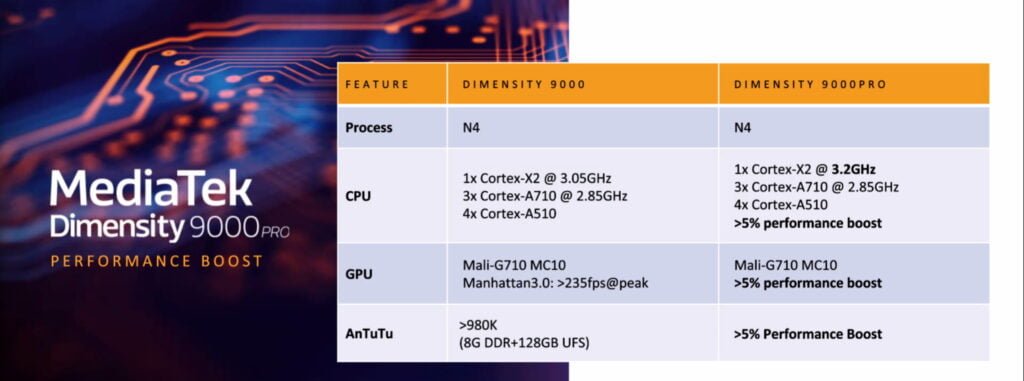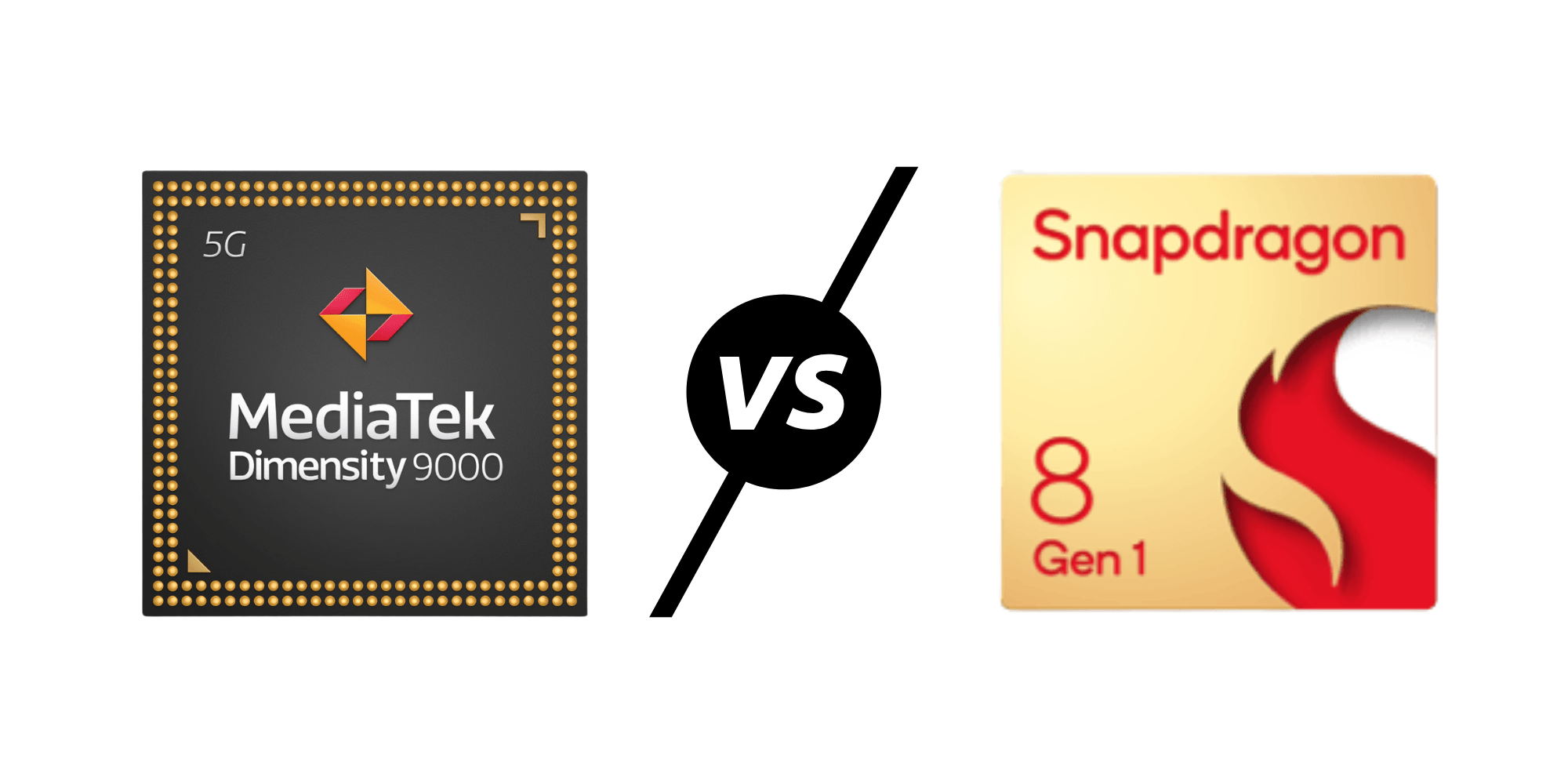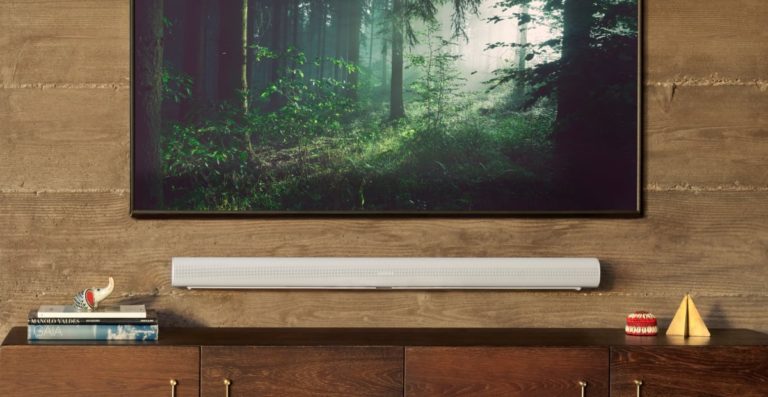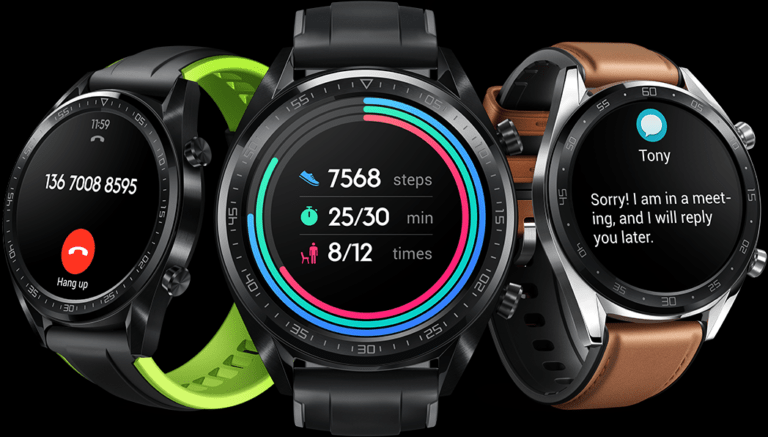Any links to online stores should be assumed to be affiliates. The company or PR agency provides all or most review samples. They have no control over my content, and I provide my honest opinion.
Last month, Qualcomm announced its mid-cycle refresh of the Qualcomm Snapdragon 8 Gen 1. Breaking from the traditional fractional improvement with CPU/GPU frequencies, Qualcomm made the dramatic move of shifting fabrication processes. The result was a significant improvement in both performance and efficiency for the Snapdragon 8+ Gen 1.
MediaTek has now announced its mid-cycle refresh, and it is far less exciting. However, in defence of MediaTek, they didn’t need to change much; they were already using the superior TSMC fabrication process. Therefore, the MediaTek Dimensity 9000+ doesn’t change things much, but any improvement is always welcome.
MediaTek Dimensity 9000 Plus vs Dimensity 9000 vs Qualcomm Snapdragon 8+ Gen 1 Specification Compared

| Chipset | MediaTek Dimensity 9000+ | MediaTek Dimensity 9000 | Qualcomm Snapdragon 8+ Gen 1 |
|---|---|---|---|
| Process | TSMC 4NM | TSMC 4NM | TSMC 4NM |
| CPU | 1 x Arm Coretex-X2 @ 3.2Ghz 3 x Arm Coretex-A710 @ 2.85Ghz 4 x Arm Cortex-A510 5% performance boost | 1 x Arm Coretex-X2 @ 3.05Ghz 3 x Arm Coretex-A710 @ 2.85Ghz 4 x Arm Cortex-A510 | 1 x Arm Coretex-X2 @ 3.2Ghz 3 x Arm Coretex-A710 @ 2.8Ghz 4 x Arm Cortex-A510 @ 2.0Ghz 10% faster CPU performance (vs SD8 Gen 1) 30% more power-efficient (vs SD8 Gen 1) |
| GPU | Arm Mali-G710 5% performance boost (250fps) | Arm Mali-G710 Manhattan3.0: >235fpspeak | Adreno GPU 10% faster GPU clock speeds (vs SD8 Gen 1) 30% GPU power reduction (vs SD8 Gen 1) Manhattan3.0: 276fps peak |
| AnTuTu | 5% performance boost (1029000) | >980K (8GB RAM + 128GB UFS) | 1120235 vs 985115 on (vs SD8 Gen 1) |
CPU & Fabrication Process
As you can see from the above table, hardly anything changes for MediaTek, just a 5% frequency improvement on a single core, which MediaTek claim also provides a 5% performance improvement.
In comparison, thanks to the shift to TSMC, Qualcomm were able to improve the frequencies for all their CPU cores:
- The X2 core gets a 0.2Ghz increase which is 6.66% higher.
- The middle three A710 cores get a 0.3Ghz improvement making the clock 12% higher
- The A510 cores get a boost with 0.2Ghz, an improvement of 11.11%
GPU
Neither MediaTek nor Qualcomm have confirmed the frequencies for the GPUs but have stated performance improvements.
MediaTek has improved things by 5%, and Qualcomm again have managed to make significant improvements due to the fabrication change, gaining 10% performance and improved power efficiency.
Benchmarks
MediaTek has vaguely said that the MediaTek Dimensity 9000 Plus has a 5% improvement on two separate benchmarks, Antutu and Manhattan 3.0.
The 5% performance improvements MediaTek claims should take the results up to:
- Antutu: 1,029,000
- Manhattan 3.0: 250 fps
In comparison, the Qualcomm Snapdragon 8+ Gen 1 is slightly better with:
- Antutu: 1,120,235
- Manhattan 3.0: 276 fps
Which would give Qualcomm roughly a 10% lead of MediaTek. While that is not insignificant, I think both chipsets are so powerful that there will be little to no perceived difference in real-world scenarios.
Overall
Over the past few years, I have been quite critical of these mid-cycle refreshes, and this can easily be said here, with a 5% increase in CPU frequency on a single CPU core plus an unknown 5% improvement on the GPU.
While I haven’t used a MediaTek Dimensity 9000 phone yet, by all accounts, it is a superior chipset to the Samsung fabricated Qualcomm Snapdragon 8 Gen 1. MediaTek didn’t really need to improve much.
What is interesting is how Qualcomm’s shift from Samsung to TSMC could possibly rebalance things back in favour of Qualcomm. This mid-cycle refresh is massive, with claims of a 10% improvement in performance but also a 30% improvement in efficiency.
Looking at the claimed benchmark numbers, then the MediaTek Dimensity 9000 Plus and Qualcomm Snapdragon 8+ Gen 1 are going to be very evenly matched. There is a slight edge for Qualcomm, but small enough that it is not bothering about. I’d say power efficiency is more important at this point, and there is no real-world data on how the two chipsets will compare yet.
The main issue with MediaTek is the lack of devices that use their chipsets in the west. We have seen the superb Realme GT Neo 3 running the Dimensity 8100, but there is no word on any phone launching in the UK/EU running the Dimensity 9000 or 9000 Plus.
I am James, a UK-based tech enthusiast and the Editor and Owner of Mighty Gadget, which I’ve proudly run since 2007. Passionate about all things technology, my expertise spans from computers and networking to mobile, wearables, and smart home devices.
As a fitness fanatic who loves running and cycling, I also have a keen interest in fitness-related technology, and I take every opportunity to cover this niche on my blog. My diverse interests allow me to bring a unique perspective to tech blogging, merging lifestyle, fitness, and the latest tech trends.
In my academic pursuits, I earned a BSc in Information Systems Design from UCLAN, before advancing my learning with a Master’s Degree in Computing. This advanced study also included Cisco CCNA accreditation, further demonstrating my commitment to understanding and staying ahead of the technology curve.
I’m proud to share that Vuelio has consistently ranked Mighty Gadget as one of the top technology blogs in the UK. With my dedication to technology and drive to share my insights, I aim to continue providing my readers with engaging and informative content.








I appreciate the upgraded features of this Mediatek Dimensity 9000 plus chipset. I think it is going to make super powerful!
Features of this Dimensity 9000 plus are looking good. I am impressed by the brand Mediatek.